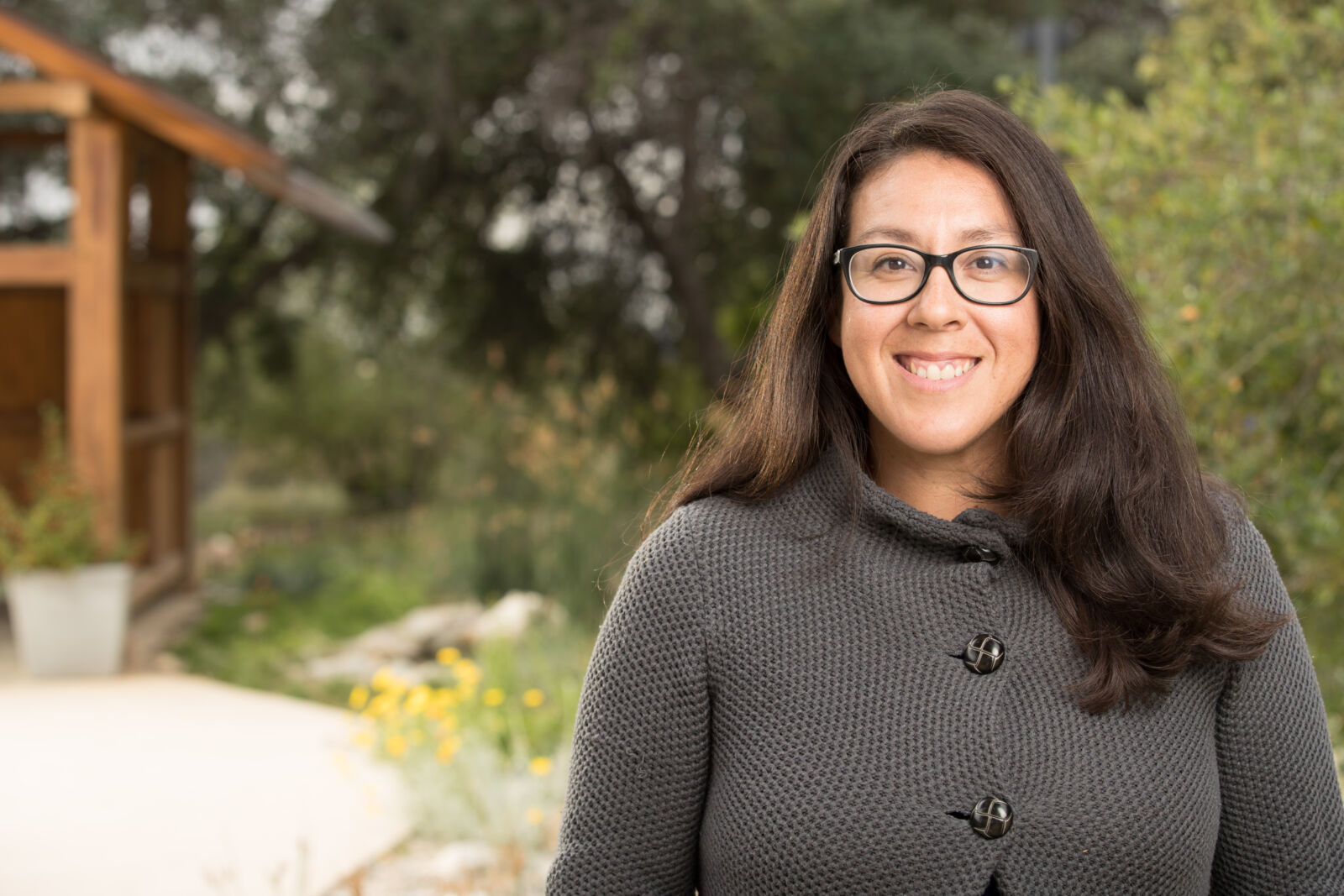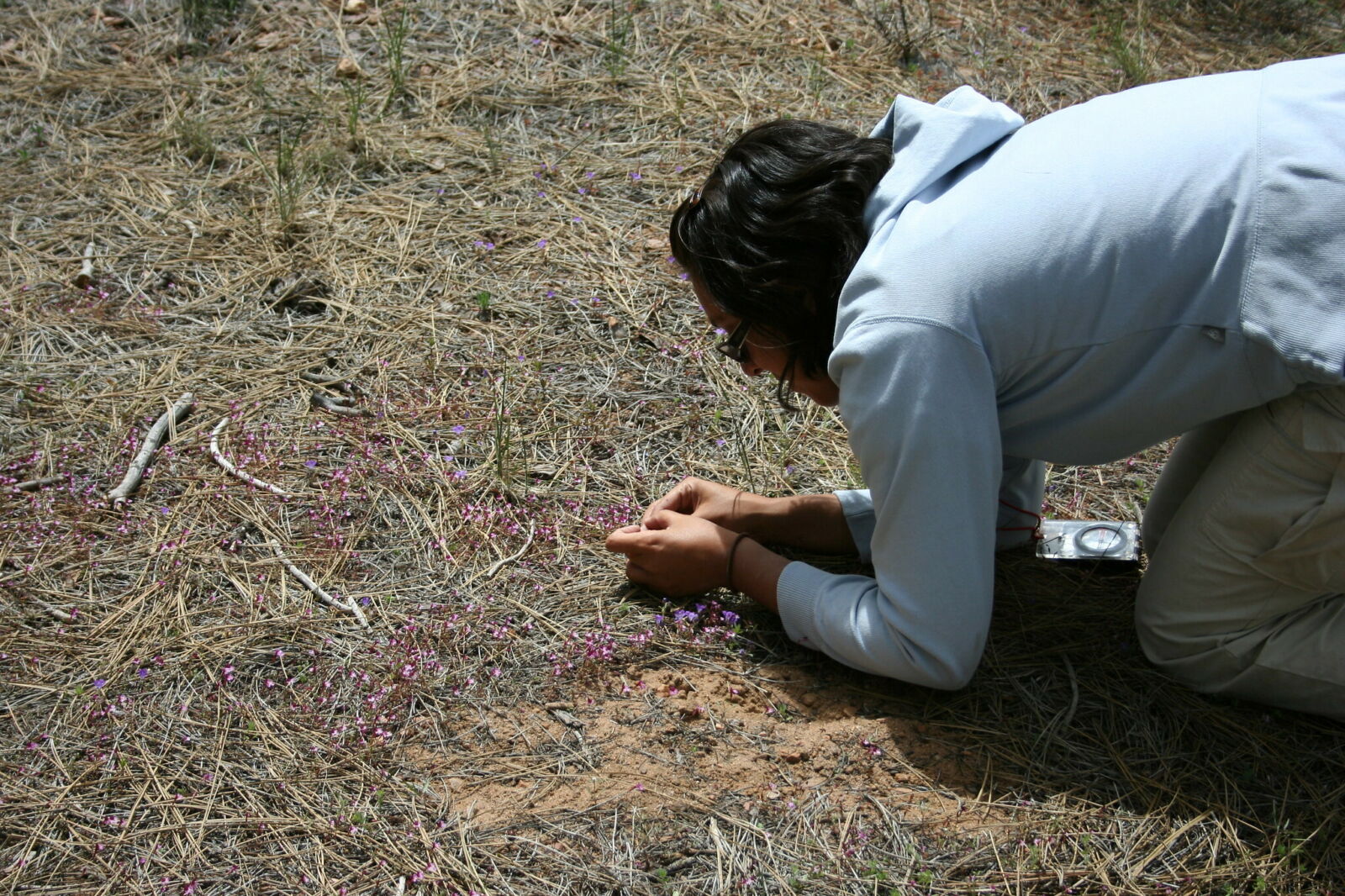While Dr. Naomi Fraga may not have connected with plants specifically as a child, she appreciated the outdoors and natural spaces. Memorable visits to National Forests and public lands while in middle and high school left a lasting impression.
Today she is Director of Conservation Programs at the California Botanic Garden where she focuses on studying and ensuring the heath of California’s vast native plant species. From monitoring and surveying of rare plants to removing invasive plants on National Forests, her work ensures plants continue to provide critical benefits for our society and the natural world.
Where did you grow up and when did your interest in plants first start?
Growing up in Los Angeles County, my world primarily existed within the built environment. I often felt trapped and didn’t have a lot of access to natural spaces, even though I lived 10 or 15 minutes from the border of the Angeles National Forest.
When I was in sixth grade, one of my teachers who lived near the Forest, took us on a field trip. I remember being mesmerized by nature. And when I was in high school, I had the opportunity to take a road trip to the east side of the state and visit some really magnificent places. Both of these experiences made a really strong impression on me.

I didn’t start studying plants specifically until I was an undergraduate at Cal Poly Pomona. While I studied biology and environmental conservation, I volunteered at the California Botanic Garden. They were hooked on plants and before I knew it they had me hooked on plants.
Why is it important to study rare plants?
Plants are foundational for terrestrial environments across the planet. Rare plants are a key part of ecosystems and wildlife habitat. They support pollinators and create their own little ecosystems within a landscape.
In California we have rich variety of plants and nearly one third of them, about 2,300 different plants, have some sort of rarity ranking. These plants represent irreplaceable diversity. Due to the rapid change in our environment from climate change, they are some of the most vulnerable to extinction.
It’s important that we monitor and care for them to ensure they can stick around for many generations beyond my lifetime and continue to support healthy ecosystems.
What is something people may not realize about being a botanist?
While studying plants doesn’t offer the same tangible benefits of other professions, studying plants is incredibly important, even if you live in built environments.

We rely on plants every day. Our water supply comes from public lands where the plants filter our water that eventually makes it to our tap. They provide oxygen and for millennia have provided us with medicine, food, and shelter. I would challenge anyone to live an hour of their life without plants. I think they would find it difficult!
People may not realize just how essential it is that we understand the plant world so that we can conserve it for future generations. Plants are so valuable and improve our lives in so many ways, we just may not recognize it right away.
What is a plant unique to Southern California that people can find on the surrounding National Forests?
A popular plant right now are live-forevers in the genus Dudleya. They’re a succulent that grows out of rock walls and can be very showy. While they can be very desirable, it’s important for visitors to appreciate them in their native habitat.
One in particular, the San Gabriel Mountains live-forever, is endemic to the San Gabriel Mountains and can only be found within a few canyons, mostly on the Angeles National Forest. It’s rare and a special treat when you see one.
What are some of your favorite National Forests to visit and explore?
I’ve explored and hiked within my backyard National Forests more than any other forest. They are my home. When I think about going to the forest, I always think of the Angeles and San Bernardino National Forests.
Follow Naomi on Instagram at @naomibot and learn more about her work at the California Botanic Garden at calbg.org.

